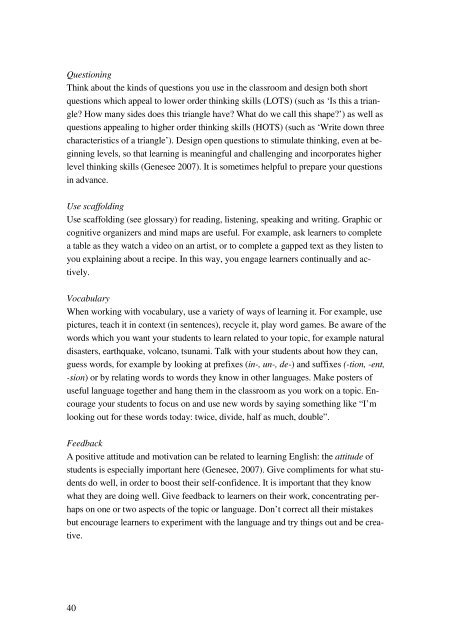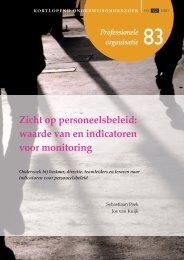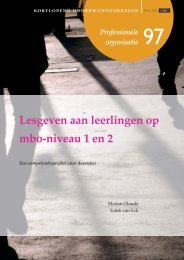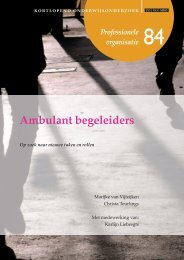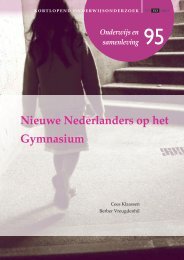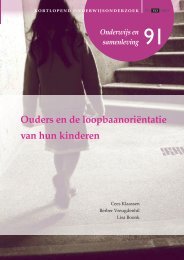Proud to be tvmbo - Kortlopend Onderwijsonderzoek
Proud to be tvmbo - Kortlopend Onderwijsonderzoek
Proud to be tvmbo - Kortlopend Onderwijsonderzoek
Create successful ePaper yourself
Turn your PDF publications into a flip-book with our unique Google optimized e-Paper software.
Questioning<br />
Think about the kinds of questions you use in the classroom and design both short<br />
questions which appeal <strong>to</strong> lower order thinking skills (LOTS) (such as ‘Is this a triangle?<br />
How many sides does this triangle have? What do we call this shape?’) as well as<br />
questions appealing <strong>to</strong> higher order thinking skills (HOTS) (such as ‘Write down three<br />
characteristics of a triangle’). Design open questions <strong>to</strong> stimulate thinking, even at <strong>be</strong>ginning<br />
levels, so that learning is meaningful and challenging and incorporates higher<br />
level thinking skills (Genesee 2007). It is sometimes helpful <strong>to</strong> prepare your questions<br />
in advance.<br />
Use scaffolding<br />
Use scaffolding (see glossary) for reading, listening, speaking and writing. Graphic or<br />
cognitive organizers and mind maps are useful. For example, ask learners <strong>to</strong> complete<br />
a table as they watch a video on an artist, or <strong>to</strong> complete a gapped text as they listen <strong>to</strong><br />
you explaining about a recipe. In this way, you engage learners continually and actively.<br />
Vocabulary<br />
When working with vocabulary, use a variety of ways of learning it. For example, use<br />
pictures, teach it in context (in sentences), recycle it, play word games. Be aware of the<br />
words which you want your students <strong>to</strong> learn related <strong>to</strong> your <strong>to</strong>pic, for example natural<br />
disasters, earthquake, volcano, tsunami. Talk with your students about how they can,<br />
guess words, for example by looking at prefixes (in-, un-, de-) and suffixes (-tion, -ent,<br />
-sion) or by relating words <strong>to</strong> words they know in other languages. Make posters of<br />
useful language <strong>to</strong>gether and hang them in the classroom as you work on a <strong>to</strong>pic. Encourage<br />
your students <strong>to</strong> focus on and use new words by saying something like “I’m<br />
looking out for these words <strong>to</strong>day: twice, divide, half as much, double”.<br />
Feedback<br />
A positive attitude and motivation can <strong>be</strong> related <strong>to</strong> learning English: the attitude of<br />
students is especially important here (Genesee, 2007). Give compliments for what students<br />
do well, in order <strong>to</strong> boost their self-confidence. It is important that they know<br />
what they are doing well. Give feedback <strong>to</strong> learners on their work, concentrating perhaps<br />
on one or two aspects of the <strong>to</strong>pic or language. Don’t correct all their mistakes<br />
but encourage learners <strong>to</strong> experiment with the language and try things out and <strong>be</strong> creative.<br />
40


